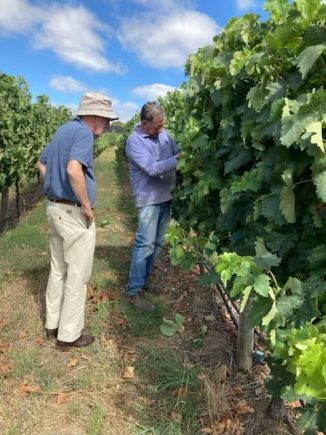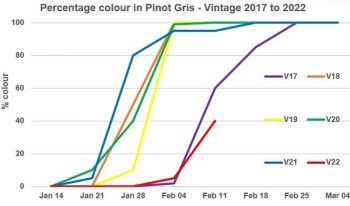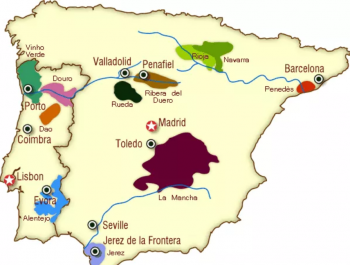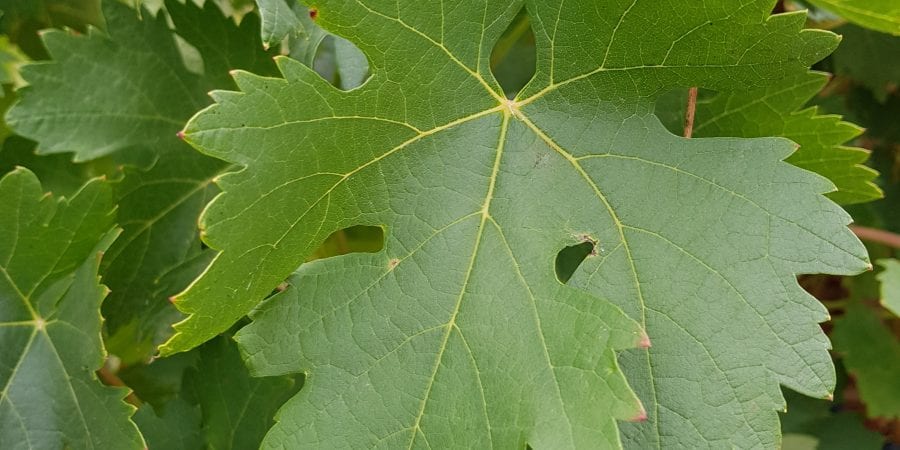 Just before I get back to that tricky topic from last week (and I promise I will at some stage!), I’ve got an update from the vineyard for you first.
Just before I get back to that tricky topic from last week (and I promise I will at some stage!), I’ve got an update from the vineyard for you first.
Late last week, Rob spent some time with Kim Anderson at his vineyard in Charleston (and not just to enjoy one of his super-strong shots of coffee!)
Rob has a big 2022 planned. He’s hoping to make…
- Sparkling Pinot Noir
- Sauvignon Blanc
- Fumé Blanc
- Chardonnay
- Rosé
- more of his “once-off” Light Dry Red!
- Pinot Noir
- Tempranillo/Graciano blend
- Shiraz
- Sparkling Shiraz
and he may even sneak a Cabernet Sauvignon in there this year (more on that later)!
And with a fair chunk of that coming from Kim’s vineyard (specifically the Sauvignon Blanc, Fumé Blanc, Chardonnay, Pinot, Tempranillo and Graciano), he wants to make sure everything is looking tip-top.
This is what he discovered…
Low yield
 Rob and Kim had a lovely long look around the vineyard. They focused mostly on the red varieties – Pinot, Tempranillo and Graciano.
Rob and Kim had a lovely long look around the vineyard. They focused mostly on the red varieties – Pinot, Tempranillo and Graciano.
And the thing they noticed in all those varieties is that the yield looks low. And I guess in comparison to last year’s bumper crop anything is going to look low!
In all seriousness though, Kim did note that flowering was late this vintage. And the vines seemed to struggle a bit with fruit set. Given the cool temperatures we had during November and December, this was not unexpected. Here in the Hills our summer just didn’t take off as it has in the past. I feel like we’re only just catching up now. And even then, we’re still getting really cool nights/early mornings.
But, at the end of the day, it doesn’t really matter how much fruit there is (I have a feeling Kim may disagree with me on that though!) as long as the quality is there!
And coming from Kim’s vineyard, that’s a given!
Erratic veraison
No, that’s not the name of my new punk rock band.
It’s how Rob described veraison throughout Kim’s vineyard. And not only between varieties – that’s normal with some varieties naturally ripening earlier than others. But rather, they both observed variability within the same variety. And even on the same vine.
Rob explained that in some vines, one bunch was quite dark in colour and was clearly well into veraison whereas others were still had hard, green berries.
Not only is veraison quite late this vintage, but due to this variability, it is dragging on for a lot longer than usual.
Again, this is down to the cooler temperatures we’ve been experiencing throughout the Hills.
Loving our blog? Sign up for weekly updates straight to your inbox…
And according to last week’s CropWatch report, it’s not just restricted to Kim’s vineyard…
“A combination of factors, affected by cool conditions, have resulted in considerable variability in bunch development this season.
“Almost all varieties are showing some signs of colour and will be at E-L 35 once 50% of berries are coloured. Most varieties are at E-L 34, berries begin to soften; sugar starts increasing, but some may still be at E-L 33, berries still hard and green. It is difficult defining this stage in the E-L scale”.
CropWatch continues to report that vintage 2022 is 2-3 weeks behind last season.
This great graph clearly shows that we’re currently tracking with vintage 2017 which also followed on from an unseasonably wet and cold spring.

We’re not at the sampling stage just yet. But when we do get there, it will be super important to ensure representative samples are taken from across the vineyard. This variability has the potential to wreak havoc with maturity analysis. But more on that later as well!
Graciano
Here is a little video Rob took of Kim’s Graciano.
And if you’re reading this thinking… Graciano?? I didn’t know Rob made a Graciano?!
Well, he has a 2020 and 2021 version in the pipeline and he’s hoping to give it another go in 2022!
And some of you may be reading this, thinking… I don’t even know what Graciano is?!
Well, this is for you…
What is Graciano?
 Graciano is a black-skinned variety from Northern Spain. It is mostly grown in the Navarra and Rioja wine regions (those green bits on the right-hand side of the map).
Graciano is a black-skinned variety from Northern Spain. It is mostly grown in the Navarra and Rioja wine regions (those green bits on the right-hand side of the map).
It’s not commonly grown in other parts of the world, although small quantities can be found in California and here in Australia. It is also grown in France under the name Morrastel.
The classic Spanish Graciano wine is moderately tannic, deeply coloured and intensely perfumed. It has aromas of mulberry, violets and chocolate.
Graciano’s intense flavours and aromas make it perfect for blending. In Rioja it is very popular with winemakers who use it to make the classic Rioja blend with Tempranillo and Grenache. Even when it is used in only small volumes, it has a definite influence over the finished product.
Unfortunately, Graciano can be a bit of a pain to grow. The vines are very low-yielding, which is probably the biggest reason growers chose not to plant more of them. They are also particularly susceptible to rot and downy mildew. In the 20th Century, many Rioja wineries uprooted their Graciano vines in favour of more fashionable grapes such as Tempranillo and Cabernet Sauvignon. Happily though, the variety is regaining popularity.
We’ve been growing Graciano in Australia for 100 years. Brown Brothers planted vines in the King Valley (Victoria) in the 1920s. While we still don’t grow a lot of Graciano, it can be found all over South Australia and in Margaret River in Western Australia.
